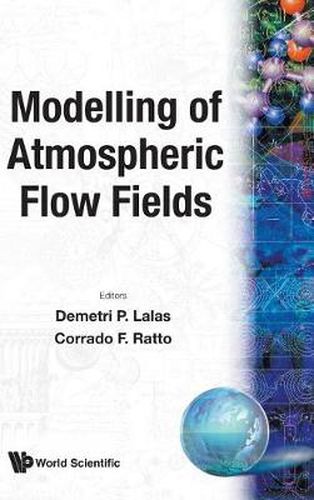Readings Newsletter
Become a Readings Member to make your shopping experience even easier.
Sign in or sign up for free!
You’re not far away from qualifying for FREE standard shipping within Australia
You’ve qualified for FREE standard shipping within Australia
The cart is loading…






This volume is a collection of lectures given at the two colloquia on atmospheric flows over complex terrain with applications to wind energy and air pollution, organized and sponsored by ICTP in Trieste, Italy. The colloquia were the result of the recognition of the importance of renewable energy sources, an important aspect which grows yearly as the environmental problems become more pronounced and their effects more direct and intense, while at the same time, the wise management of the Earth’s evidently limited resources becomes imperative. It is divided into two main parts. The first, which comprises chapters 1 to 4, presents the structure of the atmospheric boundary layer with emphasis on the region adjacent to the ground. The second, chapters 5 to 10, discusses methods for the numerical computation of the wind field on an arbitrary terrain. The unique feature of this book is that is does not stop at the theoretical exposition of the analytical and numerical techniques but includes a number of codes, in a diskette, where the mechanisms and techniques presented in the main part are implemented and can be run by the reader. Some of the codes are of instructional value while others can be utilized for simple operational work.
$9.00 standard shipping within Australia
FREE standard shipping within Australia for orders over $100.00
Express & International shipping calculated at checkout
This volume is a collection of lectures given at the two colloquia on atmospheric flows over complex terrain with applications to wind energy and air pollution, organized and sponsored by ICTP in Trieste, Italy. The colloquia were the result of the recognition of the importance of renewable energy sources, an important aspect which grows yearly as the environmental problems become more pronounced and their effects more direct and intense, while at the same time, the wise management of the Earth’s evidently limited resources becomes imperative. It is divided into two main parts. The first, which comprises chapters 1 to 4, presents the structure of the atmospheric boundary layer with emphasis on the region adjacent to the ground. The second, chapters 5 to 10, discusses methods for the numerical computation of the wind field on an arbitrary terrain. The unique feature of this book is that is does not stop at the theoretical exposition of the analytical and numerical techniques but includes a number of codes, in a diskette, where the mechanisms and techniques presented in the main part are implemented and can be run by the reader. Some of the codes are of instructional value while others can be utilized for simple operational work.